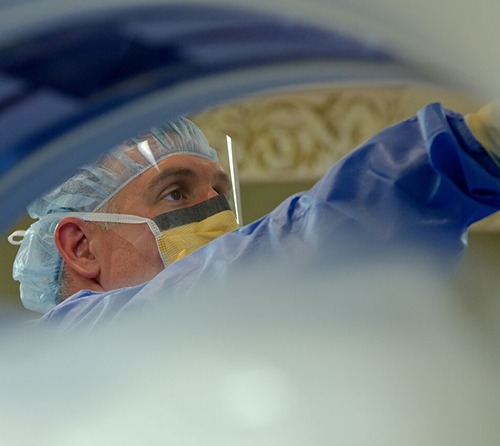 Cryoablation of the posterior vagal trunk, the nerve carrying hunger signals to the brain, may help patients with mild-to-moderate obesity lose weight, according to a study presented at the Society of Interventional Radiology’s 2018 Annual Scientific Meeting (17–22 March, Los Angeles, USA). The treatment was determined safe and feasible in the initial pilot phase.
Cryoablation of the posterior vagal trunk, the nerve carrying hunger signals to the brain, may help patients with mild-to-moderate obesity lose weight, according to a study presented at the Society of Interventional Radiology’s 2018 Annual Scientific Meeting (17–22 March, Los Angeles, USA). The treatment was determined safe and feasible in the initial pilot phase.
“We developed this treatment for patients with mild-to-moderate obesity to reduce the attrition that is common with weight-loss efforts,” said David Prologo, an interventional radiologist from Emory University School of Medicine, Atlanta and lead author of the study. “We are trying to help people succeed with their own attempts to lose weight.”
The vagal trunk, located at the base of the oesophagus, is one of several mechanisms that tells the brain that the stomach is empty.
Other interventional radiology procedures such as bariatric artery embolization are also being explored as a treatment option for morbid obesity.
In the study, 10 patients with a body mass index (BMI) between 30 and 37 underwent the procedure and were followed for 90 days. All patients reported decreased appetite and the overall average weight loss was 3.6% of initial body weight and an average decline of nearly 14% of the excess BMI. No procedure-related complications were reported, and there were no adverse events during the follow up.
“Medical literature shows the vast majority of weight-loss programmes fail, especially when people attempt to reduce their food intake,” said Prologo. “When our stomachs are empty, the body senses this and switches to food-seeking survival mode. We are not trying to eliminate this biological response, only reduce the strength of this signal to the brain to provide a new, sustainable solution to the difficult problem of treating mild obesity.”
Following the success of this preliminary safety and feasibility study, more patients are being recruited for a larger clinical trial of the procedure to test the efficacy and durability of the procedure. In presenting the study, the authors note several limitations, including the small sample size and the interim nature of the results.
The study was funded by Healthtronics, a medical technology company that manufactures the ablation probes used for the treatment.













